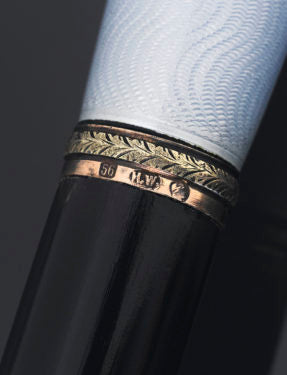Fabergé: a name synonymous with the ultimate level of finery. Known worldwide for their elaborate and ornamented jewel-encrusted enamel eggs that grace the interiors of museum giants like the Metropolitan Museum of Art and the State Hermitage Museum, Fabergé objets d’art and jewelry encompass luxury and beauty at its very best. With a glorious oeuvre that radiates with the very finest craftsmanship and techniques, it is perhaps Fabergé walking sticks that are the most unique, offering insight into the masterful minds within the Fabergé workshop.

Design Precursors
Visions for the unique designs and styles of Fabergé walking sticks began long before Fabergé transformed into a leader in Western decorative arts. During his adolescence, Peter Carl Fabergé, eldest son of Fabergé’s founder Gustav, acquired design inspiration from world travels and interaction with decorative objects from past centuries, particularly the grandeur of 18th century objets d’art.
Embarking upon a Grand Tour of Europe, Peter was able to witness impressive craftsmanship techniques from past centuries in leading European museums. In 1866, Peter returned to St. Petersburg and continued his voyage of examining forgotten artistry and styles by becoming involved with cataloguing and restoring old masterpieces crafted by master goldsmiths at the Hermitage museum. Soon, Peter became undeniably enamored with the 18th century French gold engraved snuff boxes whose chased panels were delicately inlaid with vibrant precious gemstones and the colorfully enameled pieces before him. Undoubtedly, it was during this period that the remarkable talents of past genres were illuminated before him and the seeds were planted for using past techniques and styles as inspiration for future Fabergé walking sticks.

Laying the Foundation
Perhaps the most pivotal moment in the history of Fabergé is 1882, when Peter ultimately took over as director of the company. Providing the business with fresh energy and momentum, Peter brought forth his newly re-discovered artistry techniques in creation of contemporary designs. With consummate craftsmanship and an inventive spirit, the house of Fabergé truly transformed everything into a delicate work of art.
Why Walking Sticks?
What began as a necessary tool for animal herders and intrepid travelers, the walking stick evolved into a symbol of power and prestige. For centuries, wielding a walking stick was associated with power, evident by the walking sticks of Louis XIV, for example. Fast forward to the fashionable Victorian era, and any well-established, respected man would carry a walking stick as a symbol of taste, wealth, and class.
Hot on the heels of this trend, the Fabergé workshop began crafting walking sticks topped by stunning colored enamel handles, inspired by Peter’s world travels, inlaid with dazzling white diamonds, glistening white pearls and a myriad of other gems and hardstones. Under the direction of Henrik Wigström, head of the Russian Faberge workshop from 1903-1917, Fabergé designed and fashioned some of the most detailed and sumptuous canes available on the market.

A drawing of cane handles, taken from the Wigström workshop, that is a testament to the incredible process behind the Faberge walking stick design process.
The Importance of Enameling
As a very special interest of Peter Fabergé himself, many of the firm’s walking stick handles were enveloped in exquisite enameling. Standing as a testament to the technical talent of Fabergé work masters, enameling techniques employed for walking sticks surpassed that of any artisan before. As a practice that has existed for centuries, with evidence of enameling as early as the Mycenaean period in 13th century BC, no other artisan had elevated enameling quite like Fabergé.
Seen as enormous feat of technology and inventiveness, Fabergé used an extraordinarily complicated enameling process. While their formulas and documentation have since been lost, they enriched the technique and broadened the standard palette of enameling into a wide array of over one hundred and forty new colors, introducing resplendent mauves, yellows, all shades of greens, and even rich salmons.

As a glossy coating that often covers areas of metal, enamel is often used as decoration or protection. The actual technique and substance, however, is far from simple. First, a craftsman compiles finely crushed glass carefully spreads out onto the metal surface of the walking stick. Then, the colored glass is carefully placed into a kiln and fired. Fabergé artisans perfected this technique so much that they would add and fire up to six layers to achieve the ultimate luster and depth of color on their walking sticks. With this, the powdered glass fuses to the metal and a strong, durable glaze is the final product. Because of this technique, Fabergé work masters transformed an everyday object into an opulent work of art.
Though not a far cry from the other goods that Fabergé crafted, these luxury canes added to the firm’s expansive oeuvre and illuminated the talent found in the Fabergé workshop. Ultimately becoming the largest jewelry firm in Russia, Fabergé walking sticks are superb examples of contemporary Russian craftsmanship and are still regarded as pinnacles of decorative art.
To view our current selection of Fabergé canes, click here.








